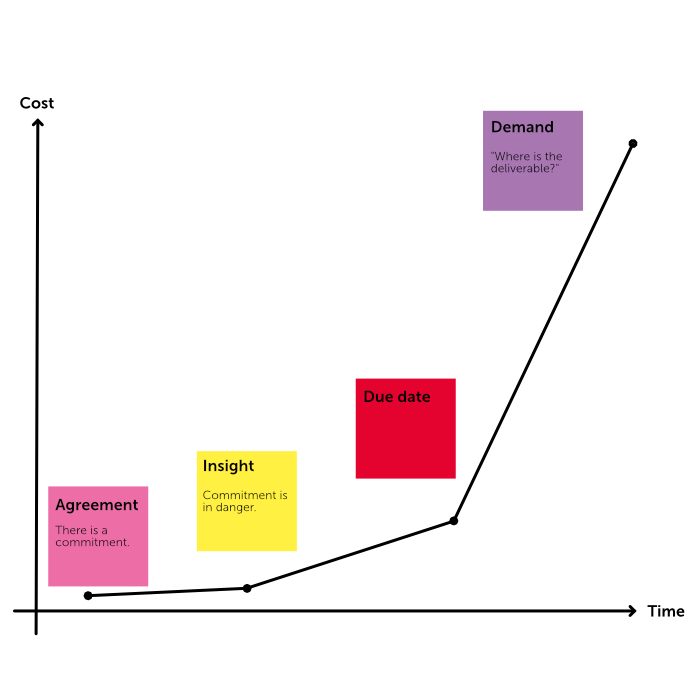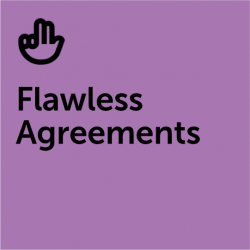Background
The method “Flawless Agreement” goes back to Professor Fred Kofman, who taught at MIT and Berkley University in the USA. You will certainly recognize immediately in the description that a “flawless agreement” is not a magic trick. Nevertheless, it combines excellently the aspects that Professor Kofman sees as essential in today’s business world, namely conscious and conscientious action, which pays off on our integrity. Both belong in today’s world: the intellectual and creative head, as well as the trusting and intuitive heart. Professor Kofman also explores the question of the cost of agreements not being kept. While it may not be possible to measure the loss of trust directly in numbers, it can be assumed that it is damaging to trust.

If someone has made a commitment and realizes that he cannot keep it, the impact on trust in him will be low if he immediately communicates openly and transparently that he cannot keep the commitment (to the full extent) – even if factual costs in the form of e.g. delivery problems etc. are the consequence.
The later a notification is received, the greater will be the factual costs as well as the loss of trust. If the failure to keep to an agreement is only revealed on demand, then the highest costs are incurred. It becomes extremely difficult to find other solutions, readjust, etc. The time is simply lost.
This makes it all the more important to reach a conscious, clear and also reliable agreement. And so it is also part of every delegation conversation which explicit expectations I have as a manager regarding the behavior of my employee. In which situations should he come to me without delay.
Step-by-Step Instructions
The inner attitude of a person of integrity who makes an agreement with another person is based on sincerity and decency. In order to make a sincere commitment, you have to make sure that you really understand the agreement. One must consciously clarify whether one can fulfill this agreement in terms of capacity and competence. Otherwise, it is important to communicate openly and transparently and to modify the agreement.
Any agreement consists of a request and a commitment.
Agreement = Request + Commitment
It is not uncommon for managers to forget that both components are needed for a clear agreement to be reached. They may delegate clearly what they want, but not get a commitment. A “flawless agreement” demands a response.
And, following Fred Kofman, there are only 5 acceptable responses
- “Yes, I commit to….”
- “No, I do not commit”
- “I can’t commit now, but will give you an answer by time X”.
- “I can’t commit now. I still need more information on issue xy. After that, I can give you a reliable answer.
- “I will make you a counteroffer”
(which then again requires a commitment).
All other answers, like “I will do my best”, “let me see what I can do” etc. are no real commitment. Even if you don’t want to upset the other person with a “no”, it is still a clearer and ultimately better option for both sides to make clear statements.
Additional Resources
Fred Kofman, Conscious Business. How to build value through values, Sounds True Inc.: Boulder, 2006.




